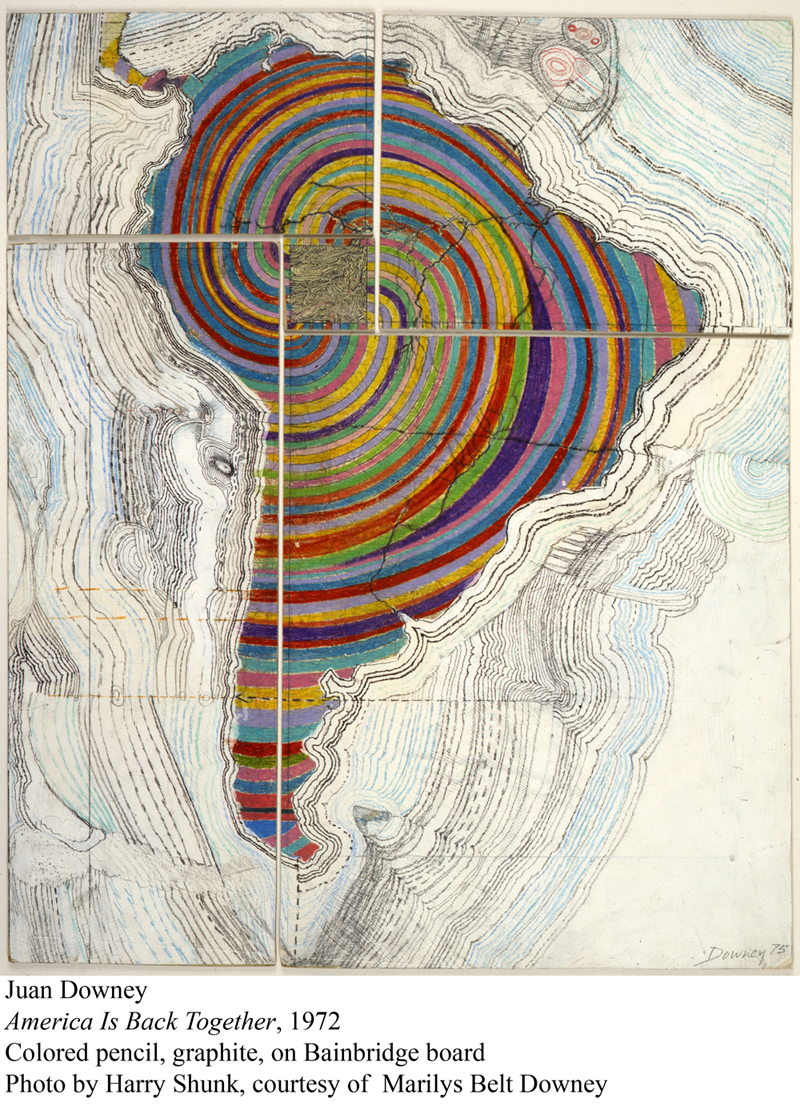Bronx Museum, February 9, through May 20, 2012
Curated by Valerie Smith
Juan Downey: The Invisible Architect is a dense and highly conceptual exhibition, one that at first hardly seems at home on the Grand Concourse in the Bronx.A lively and active figure in the New York art world from the time he arrived in 1969 until his death in 1993, Downey was born in Santiago, Chile in 1940. He finished a degree in architecture before moving to Paris to study printmaking. By the time he arrived in New York, therefore, this young man had roots in Europe as well as in North and South America. These diverse cultural threads, and his lingering attachments to (and critiques of) them all, are the subjects of the first U.S. survey of his work, which includes video, drawings, paintings, photographs and installation works as well as the artist’s notebooks. His deep connections to Latin America link him to the Bronx Museum, where he exhibited during his lifetime, and to the multicultural neighborhood outside the gallery walls.
Curated by Valerie Smith, Curator and Head of the Visual Arts, Film and Media at Haus der Kulturen der Welt in Berlin, the exhibition was organized by the MIT List Visual Arts Center as well as the Bronx Museum. Best known as a video artist for works like the two part The Thinking Eye (on Las Meninas and the idea of reflections in Western art), Downey was engaged in cutting edge conceptual and technical experiments during the 1970s and 1980s. Obsessed with the idea of invisible energies and architectures, he shifted away from material objects and toward performative and interactive works like Plato Now and Fresh Air (with Gordon Matta-Clark). But the eye-openers in this show are his stunning large-scale drawings, many of them engaged with mapping and the idea of shifting geographic boundaries and cultural identities. Much of Downey’s work, especially his series Video Trans Americas (footage of indigenous people observed and encountered throughout his travels in North and South America), is almost contemporary in its search for the self within overlapping cultural, national and political arenas. The slippages and the power plays of nations; the ties that bind races, places and traditions; the trans-cultural usages, hierarchies and vagaries of symbols: these were his themes, and this beautifully organized exhibition allows Downey’s multifaceted and still timely oeuvre to shine in all its complexity.
